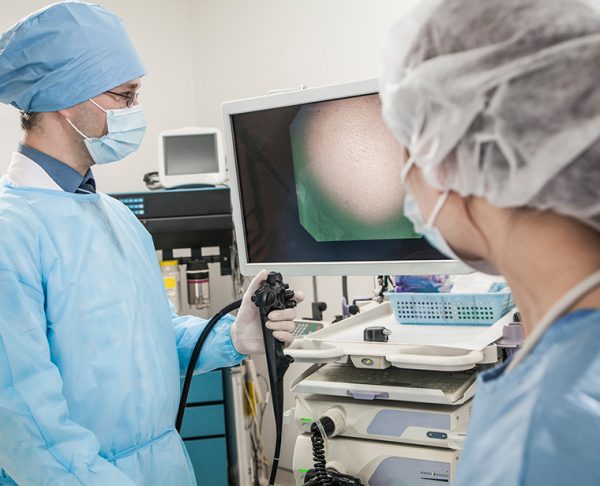ABOUT ENDOSCOPY
An endoscopy is a non-surgical procedure that is performed to examine the digestive tract. While there are various types of procedures that involve an endoscope, an endoscopy generally refers to an upper endoscopy, which examines the esophagus, stomach, and duodenum.
Performing an endoscopy can help diagnose the cause of certain symptoms such as vomiting, abdominal pain, and bleeding in the intestine. It can also help to detect the presence of ulcers and tumors. During the endoscopy, it is possible for the doctor to take a biopsy to examine any tissue abnormalities.
The procedure involves using an endoscope, which is a flexible thin tube that is fitted with a light and a video. Often the endoscope is inserted through the mouth and down the throat. The video relays images to a monitor which are interpreted by the doctor. The patient is generally conscious during this procedure, however are usually administered with a local anesthetic and conscious sedation. Some doctors may spray the with a numbing spray to prevent discomfort.
In other cases, an endoscope may be inserted through the anus, a procedure which is known as a colonoscopy. Other types of endoscopes include gastroscope, cystoscope, arthroscope, and bronchoscope. An endoscope may also be used to assist with laparoscopic surgery.
Recommended for
- Diagnosing problems with the digestive tract
TIME REQUIREMENTS
- Number of days in hospital: 1.
Overnight stay not required.
- Average length of stay abroad: 1 – 3 days.
- Number of trips abroad needed: 1.

COMPARE ENDOSCOPY PRICES AROUND THE WORLD
| Country | Cost |
|---|---|
| Thailand | 2078€ |
| Turkey | 1305€ |
| Mexico | 628€ |
| India | 135€ |
| Poland | 30€ |
HOW TO FIND QUALITY TREATMENT ABROAD
BEFORE ENDOSCOPY ABROAD
Patients will usually need to fast for 6 to 8 hours ahead of the procedure, in order to have an empty stomach. Before the procedure begins, the doctor will usually administer a local anesthetic and sedation before the camera is inserted, to help to reduce discomfort.
HOW IS IT PERFORMED
The endoscope is inserted into the mouth, down the throat and first examines the esophagus. The endoscope is then passed into the stomach and duodenum to examine for any normalities present. Should the doctor notice any abnormalities, they may take a biopsy of tissue to run tests on it, they may also remove polyps. Once the examine is complete, the endoscope is removed.
Anesthesia
This procedure is generally performed under local anesthetic and conscious sedation.
Procedure duration
The Endoscopy takes 30 to 60 minutes.

WHAT TO EXPECT AFTER ENDOSCOPY
Post procedure care
Patients will feel the effects of the sedative for some time after the procedure, and should not drive until the following day. Patients may also experience a sore throat in the hours following the procedure.
IMPORTANT THINGS TO KNOW ABOUT ENDOSCOPY
Potential risks
- Perforation
- Infection
- Bleeding












